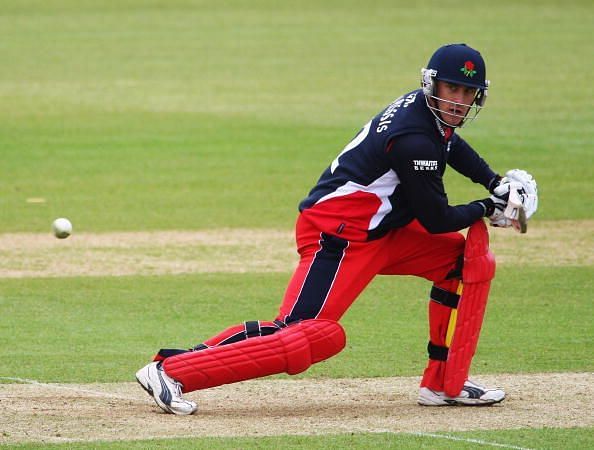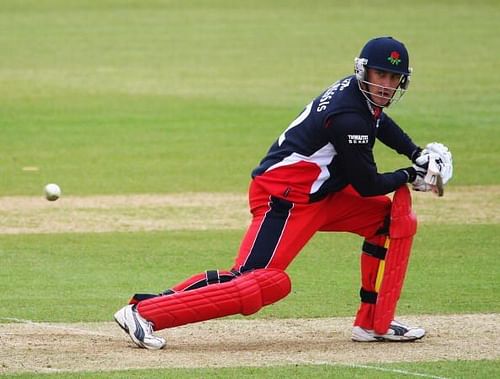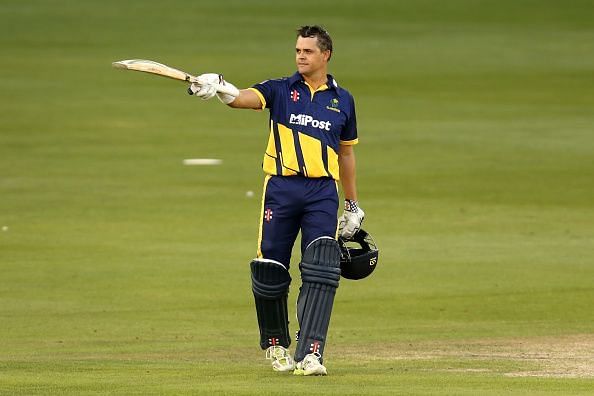
Kolpak and white talent exodus in South African cricket

The introduction of "aggressive" transformation policies at national level in South Africa have resulted in many white players switching their allegiance to England by playing county cricket via Kolpak rule.
Highveld Lions fast bowler, Hardus Viljoen, is the third South African who has recently figured for the Proteas Test side to move to England on Kolpak this season. The seamer became the latest South African to join the bandwagon of whites moving to county cricket in England in search of greener pastures and has agreed a three-year deal with Derbyshire.
Also Read: Dale Steyn wants AB de Villiers to return as South Africa's Test captain
The previous two, Stiaan van Zyl and Simon Harmer, moved to Sussex and Essex respectively. While Viljoen can still play for his home franchise, Lions, he will not be able to represent South Africa for three years, which is the total duration of his deal.
But before you call Viljoen a traitor, it is imperative to understand things from his perspective. To do that one has to be aware of what Kolpak is and how a huge cricketing nation like South Africa are impacted, both positively and negatively, by this rule.
The beginning of the Kolpak rule
Are you aware that the Kolpak rule came into existence as a result of a single person moving the European Court of Justice (ECJ)? That person is a handball player from Slovakia by the name Maros Kolpak. Kolpak was playing for a German second string side since 1997, but in 2000, the Handball Association in Germany decided that not more than two non-EU players can be included and Maros was sidelined.
Slovakia was not a member nation at the time though they did become one later in 2004. An aggrieved Maros decided to challenge his case at a German Higher Court, which transferred the matter to the ECJ.
The ECJ's final verdict, passed in favour of Maros came on 8th May, 2003, which in turn created a huge impact on county cricket. The rule was named after Maros Kolpak and came to be known as the Kolpak Rule. The new rule allowed cricketers from nations like Africa and Caribbean to ply their trade in the English cricket setup for better money.
The African, Caribbean and Pacific (ACP) group had signed an agreement with 15 countries of the EU in 2000 to try and eradicate poverty and to improve trade between EU nations. Known as the Cotonou Agreement, this pact became an opening for cricketers from these nations to play county cricket.
Why do players choose Kolpak over country?
Kolpak is mostly beneficial for retired or close to retirement international cricketers, who have two to three years of cricket left in them. An example that comes to mind is Martin Van Jaarsveld, who moved from South Africa after realising he has no future as an International cricketer at his age.
That said, there are young cricketers who in their prime opt to go the Kolpak way, leaving behind their nations, for better money and opportunities.
A player can close a Kolpak deal if and only if he is ready to give up on playing international cricket for his homeland. The rule states that a Kolpak player should not have represented his home country for a period of 12 months prior to the deal starting, though this was later broken.

The Kolpak players will, however, not be totally neglected from international cricket. He becomes eligible to play for England after completing four years in the county circuit.
The 12-month deal was soon thrown in the wind as Yorkshire signed Jacques Rudolph early in 2007.
The McLaren case
There is an exception to this rule, though, as was evident from the case of South African all-rounder, Ryan McLaren. Cricket South Africa made a desperate move to bring back McLaren from his contracted county club, Kent, by picking him in the ODI team in 2008, but the club was adamant and refused to release him.
In 2009, however, McLaren gave up his Kolpak status with a year left in his contract, possibly because he saw a future as an international cricketer with South Africa.
Then CSA CEO, Gerald Majola had at the time said: “It is good news indeed for South African cricket that all-rounder Ryan Mclaren has decided to forfeit the final year of his contract with Kent and make himself available for selection for the Proteas. Ryan has been rated as one of South Africa’s leading all-rounders over the past few years. His past performances made him a candidate for the Proteas’ squad and we have no doubt that he will be knocking on the door again.”
There were rumours that Mickey Arthur, the then coach of South Africa had contacted McLaren and said that if he makes himself available for South Africa by terminating his Kolpak deal he could be picked in the team sooner rather than later.
While McLaren denied any communication from CSA or Arthur at the time, he relinquished his Kolpak status soon and was picked in the South African ODI and T20I teams by November the same year.
Why the white talent exodus from South Africa all of a sudden?
As many as 3 players have left this season from South Africa to play for counties in England. All three of them have been recently in South Africa's plans in international cricket. Then why the sudden movement?
In early September 2016, the transformation rule was effective, which stated that, to "make cricket a truly national sport accessible to all", South Africa's national men's cricket team will need to play a minimum average of six players of colour. Of the six players, two must be black Africans in their starting XI effective immediately, in order to meet their transformation targets.
This saw a rush of black and coloured players fast-tracked to the South African A team and national team. As such, these players jumped the pecking order, placing the whites way below the queue for a chance to play cricket for South Africa.
While the transformation is a good move long term, the short-term repercussions are almost unavoidable. White players who dreamt of playing cricket for their national teams were left stranded wondering of they would ever make it to the team or if they will earn enough to feed their families. This is where Kolpak becomes an easy way to vent the frustration and earn some quick cash as well.
From the point of view of the Kolpak whites
While the rule makes them ineligible for national selection, for these players it is no longer a criteria as they were chosen in favour of less talented coloured players. They cannot be blamed for trying their best to feed their families.
The transformation targets puts them in two minds, whether to stay and fight for a place in the South African team, which has no choice but be a bit partial to the coloured players, by putting their families and income at stake or move to England and play county cricket.
The average cricket fan will argue that nation should come first for any cricketer. But give it a thought. Would anyone sacrifice their family and financial security for the nation when the nation itself does not want you? Unless it is someone like AB de Villiers or Dale Steyn, the average white cricketer is made to weigh his chances of representing the nation against the benefits of Kolpak.
CSA's challenge

While CSA have enforced the transformation policies, they need to ensure they do not lose the talented and polished white cricketers, that emerge from well-trained schools in the country. Most of the coloured and black players attend average schools with poor infrastructure and facilities.
They are mostly raw talents that emerge out of nowhere and need more coaching than the average white cricketer who has been trained from his childhood days by exceptional coaches in good schools in the country.
It virtually means every black or coloured player picked from average schools becomes polished and good enough to play at a level only after several years of high-level coaching, by which time they will be in their mid-20s or late 20s. But since the transformation requires CSA to field a certain number of coloured and black players, they are forced to rush these players to the national setup without adequate coaching.
Apart from the rare Kagiso Rabada, Khaya Zondo or Temba Bavuma, most are pretty raw with little franchise cricket under their belt and as such less coaching. Forcing them to play international matches before they are ready can only harm their confidence and also put the whites in a situation where they feel ignored for lesser talented blacks.
CSA's challenge is to find a balance between pleasing both groups of players. They cannot afford the likes of established players like Colin Ackermann or Colin Ingram moving to England.
A possible solution
An immediate solution anyone can think of is exploiting the minor loophole in the transformation rule. It states that the numbers should match up on yearly basis and not on a match by match basis. This allows CSA the freedom to play their best XI irrespective of quotas in big games. They can field more coloured players, who are on the fringe of national selection, in unimportant games.
Now, this should make the coloured players feel unwanted and used. This is where I think CSA should come up with a more compact plan. South Africa play less cricket compared to the likes of Australia, India and England. What they can do is schedule One Day or T20 matches against the likes of Zimbabwe, Afghanistan, Ireland, Scotland and Papua New Guinea.
They can schedule two to three such series in a year, both away and home games, and pick coloured players on the fringe of national selection, along with select group of whites who are already in the national team and short of match practice or form.
They can always elevate the coloured and black players to more important tours if they feel the performance is up to the mark. It also allows injured players on the comeback trail or out of form cricketers a chance to make their comeback in a smoother way.
The benefits are not for South Africa alone. These minnows also benefit by playing better groomed and trained players from a big cricketing nation. They are also exposed to different conditions when they tour South Africa and play on surfaces like the Wanderers or Durban.
A separate coach and staff can be hired for such series, which would result in better and close grooming of these players and also better rehabilitation of injured or out of form cricketers.